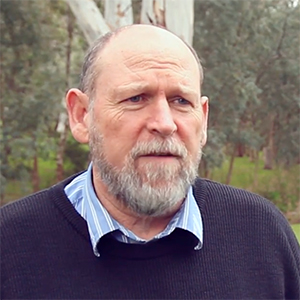It’s a far cry from what his grandparents or parents experienced at primary school. It made me think: with all the technology on hand today, how has this changed the modern teaching and learning experience?
 UniSA School of Education lecturer Dr Ruth Geer, who has research expertise in digital technologies, says that despite the hype around artificial intelligence entering classrooms, technology is supplementing rather than revolutionising modern teaching.
UniSA School of Education lecturer Dr Ruth Geer, who has research expertise in digital technologies, says that despite the hype around artificial intelligence entering classrooms, technology is supplementing rather than revolutionising modern teaching.
“Technology is changing the classroom, but it’s certainly not changing it as dramatically as people perhaps expected,” Dr Geer says.
“We’ve definitely seen a steady flow of incremental changes – through interactive whiteboards, laptops, online apps and so on.
“But while the use of technology is increasing, it isn’t replacing traditional teaching modes – children are still writing with pens on paper, and teachers are still personally engaging their classes.
“Technology should support teaching, not drive it.”
Kathleen Melis, teacher and Information and Communication Technologies (ICT) Coordinator at St Joseph’s School in Hindmarsh, agrees. She says that technology is a fantastic resource but must be used to enhance the learning experience.
“We regularly teach with technology, but always with a specific learning intention. Our students might use iPads to create movies while learning about the logical sequencing of stories, or engage with inter-active robots to learn coding,
or work with interactive Apple TVs to present and develop ideas,” Melis says.
“It’s all about connecting students with learning concepts through relevant technologies.”
 UniSA lecturer Bruce White, who specialises in improving teaching methodologies in STEM, says technologies are providing exciting new opportunities for both teachers and students.
UniSA lecturer Bruce White, who specialises in improving teaching methodologies in STEM, says technologies are providing exciting new opportunities for both teachers and students.
“Technology is opening up a whole new world of possibilities for teachers,” White says.
“For some schools, it’s really changed the way teachers think about learning. It’s provided a stimulus to re-examine how their students learn and what’s important for effective learning.
“In that way, it’s also sparked discussions around teaching pedagogy (methodology) in schools, which is positive because, like all professions, teaching must remain current and relevant.
“It’s exciting to see teachers embracing the potential that technology can deliver.”
Year 1 teacher Caterina Mazzarolo, a graduate of one of UniSA’s antecedent institutes, says technology provides new ways to help students build their understandings.
“When I started teaching, the three Rs – reading, writing and arithmetic – dominated the curriculum,” she says.
“These were the foundation of a basic skills-oriented education.
“Now, kids grow up with technology, it’s become part of their lives. And because they’re so familiar and comfortable with it, it only makes sense to use it at school.
"From iPads and projector screens that connect to teacher laptops, to literacy and mathematical apps that enhance and develop children’s learning concepts, technology facilitates our teaching and provides many different avenues for learning.”
 Associate Professor Graham Hardy, Dean and Head of School of Education at UniSA’s School of Education, says connectivity is an advantage of modern teaching technology, enabling communication like never before.
Associate Professor Graham Hardy, Dean and Head of School of Education at UniSA’s School of Education, says connectivity is an advantage of modern teaching technology, enabling communication like never before.
“Technology can provide a faster and more effective means to communicate in the classroom,” Assoc Prof Hardy says.
“Whether teachers are using YouTube videos to demonstrate a learning concept or Skype to collaborate with other classes, technology helps this happen.
“I’ve worked on projects where we’ve had children solving tasks in different countries, then coming together via a big screen to share their approaches and solutions as a group.
“Having the ability for children to talk to other children around the world or across classrooms is brilliant. It’s not something you can necessarily do all the time, but at key points in a topic, it’s a great way to collaboratively pull the learning together.”
There are many examples of how technology can add value to both teachers and students.
For UniSA graduate and primary school teacher Rachel Forbes, technology is a positive addition to classrooms, providing myriad opportunities to engage and learn, depending on the class level.
“We use all kinds of technologies: iPads are used throughout the school, with Year 5 to 7 students having one-to-one iPad access across all areas of the curriculum. We also have Apple TVs, interactive white boards, cameras, 3D printers and codable robots,” Forbes says.
“Our students love working with technology. It really motivates them to connect with what’s being taught and gives them more ownership and responsibility of their learning.”
Primary school teacher Caterina Mazzarolo, says she uses iPads to record her students when they read aloud in the class as a means of self-evaluation.
“Students love seeing themselves on a screen. When they’re able to play back and review their footage they’re receiving immediate feedback of their performance and may begin to understand what they’re doing well and what they
could improve on.
“And because some students respond better to visuals – and others to auditory information – apps and websites make technology engaging for all regardless of their learning style.”
Assoc Prof Hardy says technology is strengthening student engagement which concurrently increases the probability that learning will happen.
“Many programs provide excellent visualisations that challenge children to think differently.
“For example, we have an app that visualises water flowing through a funnel into a container. Students can change the variables that make the water run faster or slower, or change the shape of the container so that it holds more or less volume.
“Essentially, the app is teaching mathematical concepts about volume, depth and rates of change, and it’s doing so in real time, so that students can see the impact of their modifications.
“Its strength is that it’s interactive. Plus, you can have groups of children all exploring the same mathematical concepts but they do this by asking and investigating their own questions.
“In a way it’s no different from children reading a book and being challenged by the text; it’s just the next stage.”
Primary school teacher Kathleen Melis has been exploring virtual reality with her Year 3 class, using individual headsets and smartphones. She says this is the next evolution for technology in the classroom.
“Virtual reality offers a fantastic learning platform for teaching and provides students with a realistic, three-dimensional experience,” Melis says.
“Our students recently explored virtual undersea experiences, including swimming with sharks, which they absolutely loved.
“The virtual experience really immersed the students in the learning and it was great to see them so excited.”
Yet, integrating technology into the classroom requires forward planning. Tara Clarke, a UniSA teaching graduate and teacher at Allenby Gardens Primary School, says students openly embrace technology, but as a teacher, you need to plan its use appropriately.
“It’s so important to plan the way you integrate technology into your lesson,” Clarke says.
“Structured lessons that allow students to explore the technology within defined boundaries, work best. As does project-based learning, where students have specific goals and objectives to research.
“But all this requires preparation, and when you’re incorporating innovative materials into an already busy curriculum, it’s essential you focus on teaching methodology, rather than technology.”
Immanuel Primary School teacher Rebecca Harber agrees.
“Having a clear purpose for technology in your classroom is key; it should always complement the learning, never impede it,” she says.
“Using technology just for the sake of it achieves very little. When we first introduce technology in the classroom the children are always really excited, which is great, but they’re also keen to use it a lot, even when it’s not really necessary.
“As we progress through the year, the children learn how to become more responsible with technology, which today is an essential life skill – both in and out of the classroom.”
 Associate Professor Anna Sullivan from UniSA’s School of Education says it’s important for students to learn tech etiquette as part of a broader learning curve.
Associate Professor Anna Sullivan from UniSA’s School of Education says it’s important for students to learn tech etiquette as part of a broader learning curve.
“Technology is a part of children’s everyday lives. And just like learning pleases and thankyous – which can take years – learning how and when to engage with technology also takes time,” she says.
“Not only do we need to teach students how to use technology but we also need to teach them how to be safe and respectful with it, both inside and outside the classroom
“Part of this means we need to let children use technology and learn from their mistakes in a safe and supportive environment; schools that encourage this will set them up well for the future.”
These days, rightly or wrongly, children are exposed to a plethora of technologies from an early age. Aside from what they may encounter at home, including the internet, tablets, online games and smart TVs, their formal engagement with tech starts at preschool.
Mawson Lakes Preschool teacher Corey Battersby says it’s important for teachers and young children to simultaneously engage with technology.
“Young children love it when we use videos and smartboards in the preschool and they engage really well with it,” he says.
“When I use technology for learning, I’m actively involved in the learning – so it’d be quite common for you to see me and a whole gang of preschoolers dancing together in front of Just Dance videos.
“I can’t dance, so it wouldn’t be a pretty sight, but it’s a great way for the children to be active and practise their
coordination.”
Despite the benefits that technology presents, there are some downfalls.
Primary school teacher Rachel Forbes says that reliability is one of the biggest challenges.
“When technology lets you down – say if the Wi-Fi drops out or the network is experiencing ‘technical difficulties’ – it’s always frustrating.
“As teachers, we’re constantly thinking on our feet and responding to the needs of different children and situations – technology is no different.
“True, it’s just one more thing to juggle, but the benefits it presents absolutely outweigh the challenges.”
Finding the time to keep up with new technologies is another challenge, especially with new apps and innovative materials constantly being developed and uploaded online.
Assoc Prof Hardy says that it’s important to teach pre-service teachers how to be discerning about the materials they access online.
“Teachers often find themselves navigating lots of online resources to find out what’s authentic, what’s relevant, and what’s important,” he says.
“This is particularly true of teachers who are trying to be more innovative in the classroom. But of course, this takes time.
“And if we at UniSA can build their knowledge and ability to upskill, they’ll gain a lifelong skill that will add value throughout their careers.”
Tech upskilling is not limited to teachers. Parents also shoulder a fair slice of the tech-pie, not only to support their children’s learning, but to communicate with teachers themselves; it’s just the way things are.
Truth be told, we’re all on an upwards learning trajectory when it comes to technology, but it’s one that can present both benefits and challenges. For our kids, technology is just a part of everyday life: it’s always been there. But for teachers and parents, it’s something we’ve had to adapt to. Luckily, for parents of primary-aged children, today’s teachers have it covered. And together, let’s hope we can continue to keep up.